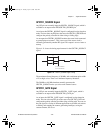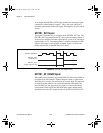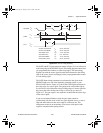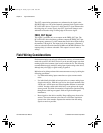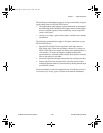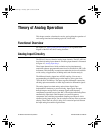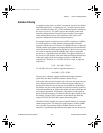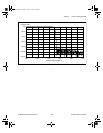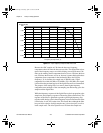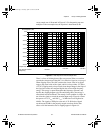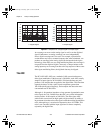
©
National Instruments Corporation 6-1 PCI-4451/4452 User Manual
6
Theory of Analog Operation
This chapter contains a functional overview and explains the operation of
each analog functional unit making up the PCI-4451/4452.
Functional Overview
See Figure 3-2, Analog Function Block Diagram, for a general block
diagram of the PCI-4451/4452 analog functions.
Analog Input Circuitry
The PCI-4451 has two identical analog input channels. The PCI-4452 has
four identical analog input channels. An analog input channel is illustrated
in Figure 4-3, Analog Input Stage.
These input channels have 16-bit resolution and are simultaneously
sampled at software-programmable rates from 5 to 204.8 kS/s in 190.7 µS/s
increments. This flexibility in sample rates makes the device well suited for
a wide variety of applications, including audio and vibration analysis.
The differential analog inputs have AC/DC coupling. You can use a
programmable gain amplifier stage on the inputs to select gains from
-20 to 60 dB in 10 dB steps. The input stage has differential connections,
allowing quiet measurement of either single-ended or differential signals.
The analog inputs have both analog and real-time digital filters
implemented in hardware to prevent aliasing. Input signals first pass
through lowpass analog filters to attenuate signals with frequency
components beyond the range of the ADCs. Then digital antialiasing filters
automatically adjust their cutoff frequency to remove frequency
components above half the programmed sampling rate. Because of this
advanced analog input design, you do not have to add any filters to prevent
aliasing. These filters do cause a delay of 42 conversion periods between
the input analog data and the digitized data.
User.book Page 1 Tuesday, April 14, 1998 10:20 AM



